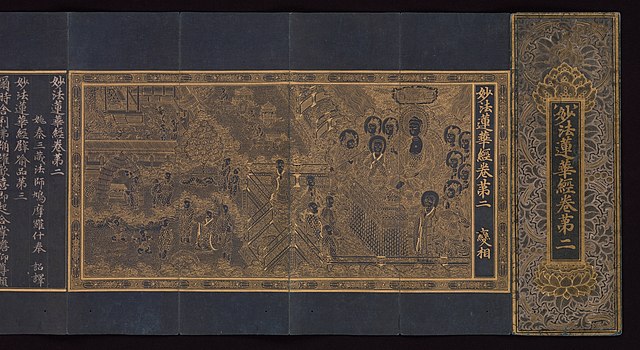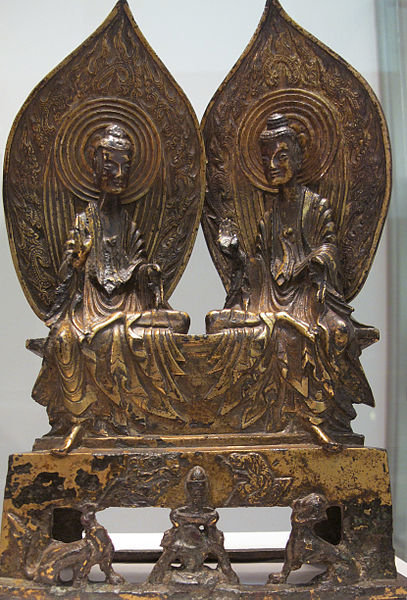Bodhisattvas of the Earth
Bodhisattvas of the Earth, also sometimes referred to as "Bodhisattvas from the Underground," "Bodhisattvas Taught by the Original Buddha," or "earth bodhisattvas," are the infinite number of bodhisattvas who, in the 15th chapter of the Lotus Sutra, emerged from a fissure in the ground.
This pivotal story of the Lotus Sutra takes place during the "Ceremony in the Air" which had commenced in the 11th chapter. Later, in the 21st chapter, Shakyamuni passes on to them the responsibility to keep and propagate the Lotus Sutra in the feared future era of the Latter Day of the Law.
An illustration of JIGAGE E SHŌ, published in 1814, Kyoto
The Lotus Sūtra is one of the most influential and venerated Buddhist Mahāyāna sūtras. It is the main scripture on which the Tiantai along with its derivative schools, the Japanese Tendai, Korean Cheontae, Vietnamese Thiên Thai and Nichiren schools of Buddhism were established. It is also influential for other East Asian Buddhist schools, such as Zen. According to the British Buddhologist Paul Williams, "For many Buddhists in East Asia since early times, the Lotus Sūtra contains the final teaching of Shakyamuni Buddha—complete and sufficient for salvation." The American Buddhologist Donald S. Lopez Jr. writes that the Lotus Sūtra "is arguably the most famous of all Buddhist texts," presenting "a radical re-vision of both the Buddhist path and of the person of the Buddha."
Sanskrit manuscript of the Lotus Sūtra in South Turkestan Brahmi script.
The Japanese title of the Lotus Sutra (daimoku) depicted in a stone inscription.
In the parable of the burning house (shown in the upper part of this Korean illustration of the sutra), a father uses three types of carts as a way to get his sons to exit a burning house. However, when they escape the fire, they all receive only one type of cart.
The Buddhas Prabhūtaratna and Shakyamuni seated side-by-side in the jeweled stupa. Bronze and gold stele, c. 518 CE, Northern Wei Dynasty. China.





